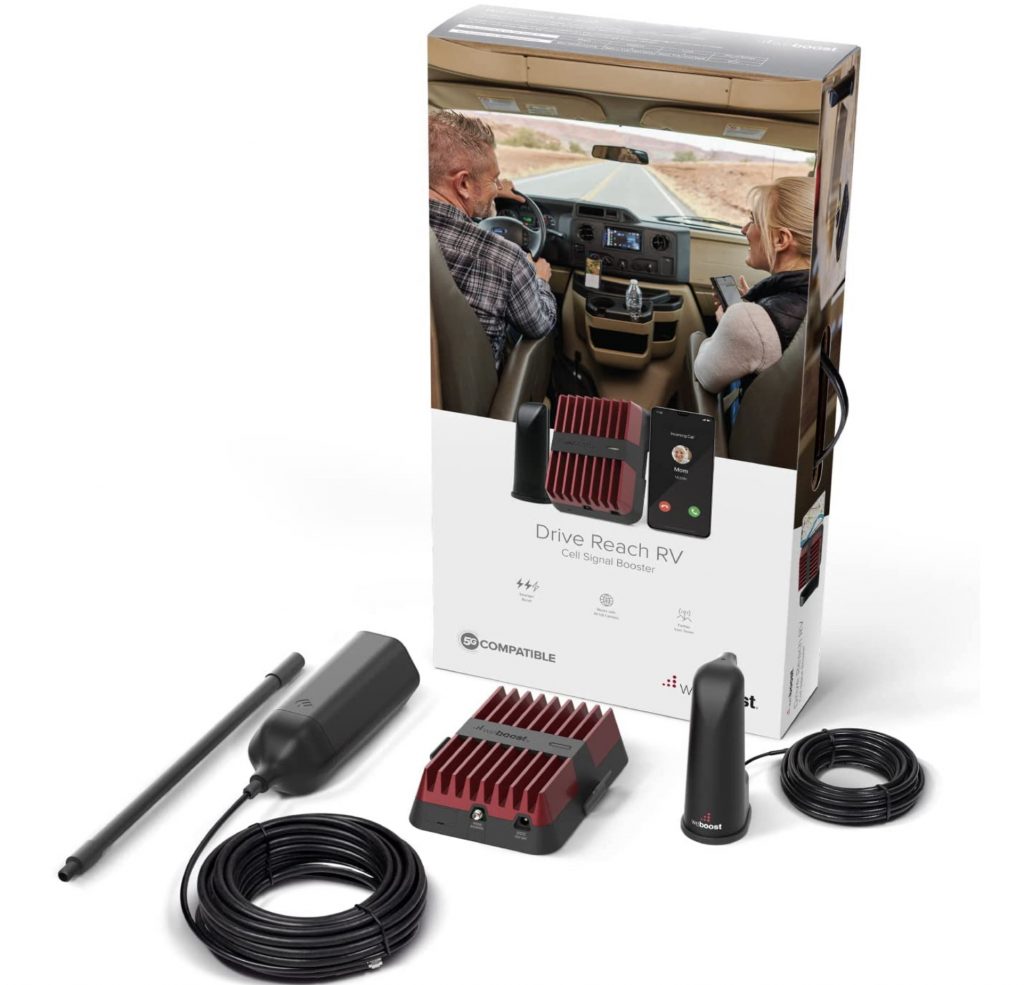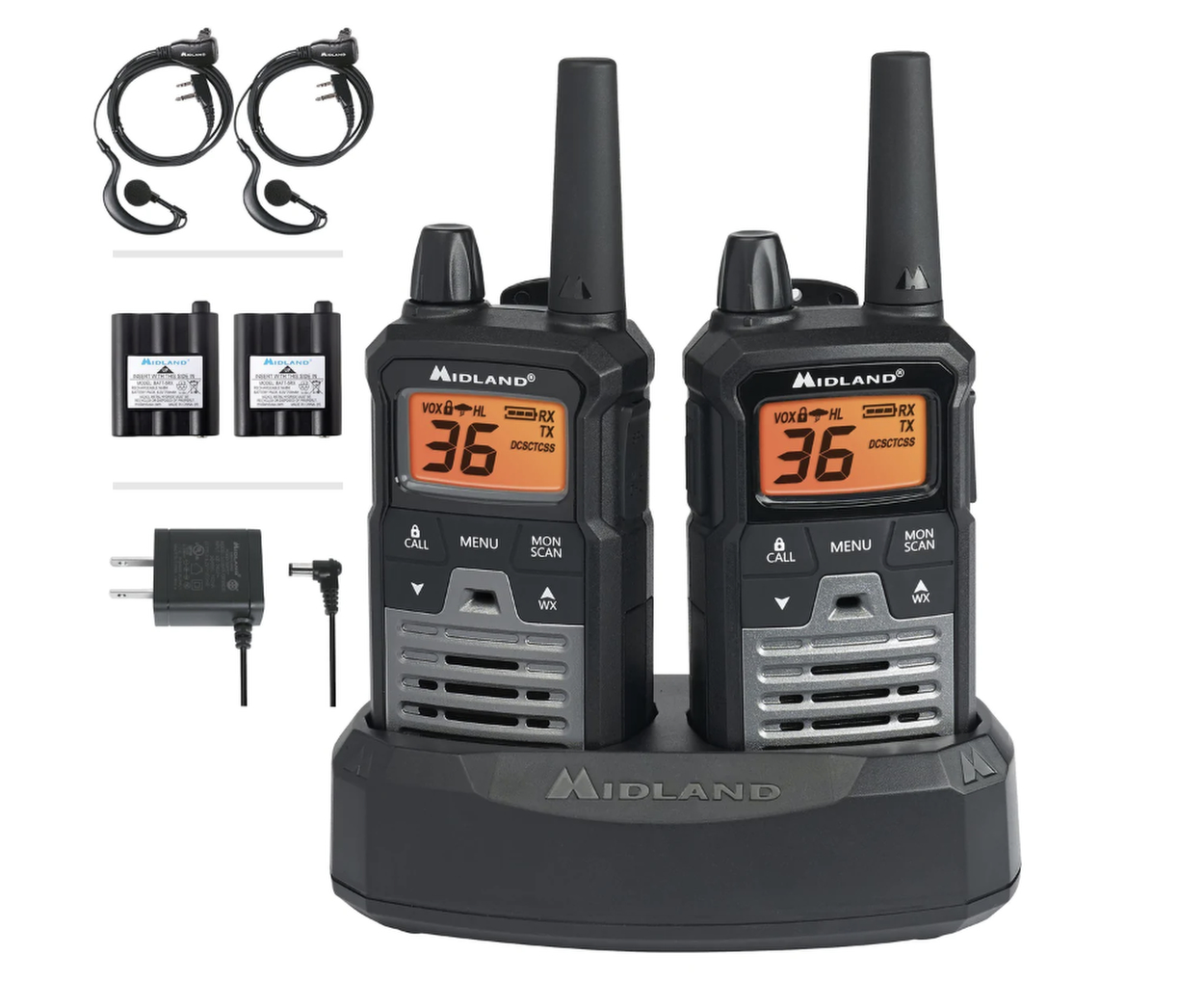
Emergency Communication On and Off The Trail: Here are the top 7 Devices You Should Consider Buying & Why
My wife and I often travel alone and enjoy exploring remote areas that are often out of cell phone range. If an emergency were ever to occur, we would be in a bad situation. That’s especially true if one of us was incapable of driving the other back to civilization; or if our 4Runner broke down and we were unable to make the trek back on foot.
If you travel alone or in a single vehicle, below I review a list of emergency communication devices that you should consider whenever you hit the trails.
Emergency Communication Devices
1. Portable Cell Phone Battery

Nearly every adult carries a cell phone today. If your travels never extend out of cell phone range, then a cell phone may be all you need. However, even with a cell phone in hand, you should carry a small backup battery.
My wife and I carry one for each of our cell phones. We do this because, in remote areas, your cell phone battery will dissipate quickly if it’s constantly searching for a good signal. We also use our cell phones for taking pictures. This too uses up battery power, especially if your phone automatically connects to online storage. All of these activities can drain your battery quickly, so backup power is always a good idea.
Find It Online:
- Anker Portable Battery Charger (all devices): Check Price
- Apple Wireless charger battery pack (IOS devices): Check Price
2. Cell Phone Booster Kit

With this kit, you can extend your cell signal range from your vehicle. A cell signal booster kit will not cause the signal from the cell tower to reach you any better, however, it will only boost your own cell phone’s signal.
The device is installed in your vehicle and boosts the signal of your cell phone for a better chance of connecting to a cell tower that may be slightly out of range otherwise. Booster kits can range from $150 to $500 with the price based on range capabilities and the number of users it can support. WeBoost is currently considered one of the best manufacturers in this category.
Find It Online:
- WeBoost Cell Phone Booster Kit: Check Price
3. Ham Radio & GMRS Radio

While the devices above help if you still have a cell signal, what about when you’re totally out of range?
I have both a Ham license and a GMRS license. These licenses can be obtained through the FCC. A Ham license requires that you take a test, however, a GMRS license does not.
I have a pair of GMRS radios that are excellent for vehicle-to-vehicle communications when traveling with others. They don’t require a cell signal, which makes them a better option than cell phones.
GMRS radios can reach as far as 35 miles, but a more reasonable distance is a few miles. This is due to signal disturbance over terrain. Mobile Ham radios, on the other hand, have more signal strength than GMRS radios. However, both types of radios have to be within reach of another party; either directly or through a repeater.
Having said that, neither a Ham nor a GMRS radio is ideal for emergency communication when traveling in remote areas. While both a Ham radio and GMRS radio serve their intended purpose well, someone still needs to be within reach on the other end. That means they are not much better than cell phones in more remote areas.
If you are interested in vehicle-to-vehicle communications, my GMRS radio of choice is the Midland T290VP4 X-Talker. It is compact and the two radios fit neatly inside my 4Runner center console.
If you are interested in a GMRS license, the cost is $35.00 and is good for 10 years. It can be obtained through the FCC.
Find It Online:
- Midland X-Talker Radio: Check Price
4. Satellite Phone

A satellite phone is just as its name implies. It is a phone that transmits and receives calls via orbiting satellites.
For most of us, a satellite phone is not practical for one reason alone – cost. A satellite phone will cost anywhere from $500 to $1,500+, and then you have to add on the usage cost of about $0.50 per minute. For most of us who are only occasionally out of cell phone coverage, the cost is a significant barrier.
These phones are typically used by serious hikers, mountain climbers, and other world travelers who want to stay in contact with family or need help. If you intend on traveling to isolated areas for more than a few days, or travel a great deal in foreign countries, then you may need a satellite phone.
Find It Online:
- Satellite Phones Check Price
5. Personal Locator Beacon (PLB)

A PLB is a device that has but one purpose, which is to notify local search & rescue agencies, local law enforcement, or any other agency in your area that handles emergencies. PLBs are what many boaters carry, as they will notify the coast guard of their location and that help is needed.
SARSAT stands for Search And Rescue Satellite Aided Tracking. PLBs make use of the government satellite network.
The upsides of a PLB are:
- A one-time fixed cost.
- There is no fee for registering the device.
- The battery in the PLB remains dormant until the unit is activated.
- This is the most economical solution for emergency communication, as there are no subscription fees.
The downsides of a PLB are:
- A PLB does not provide the ability to send a detailed message to emergency agencies or to other individuals.
- The unit has to be registered in the NOAA SARSAT database, and you must update or verify your data every 2 years.
- The battery lasts about 5 years and must be changed by a dealer because the unit uses a specialized battery.
- Some PLBs offer messaging, but an additional fee is required.
Find It Online:
- Personal Locator Beacons: Check Price
6. Satellite Messengers

Similar to a satellite phone, satellite messengers utilize orbiting satellites to send and receive text-style messages. Some units also provide SOS services. However, unlike PLBs that use government satellites, satellite messengers make use of one of two commercial satellite networks; Iridium or Globalstar. Satellite messengers are becoming increasingly popular for a few reasons.
The upsides of a PLB are:
- Along with contacting emergency services, you can send customized messages to family, friends, or, for instance, an off-road recovery company.
- The units are relatively small and prices for these units have dropped a good bit since they were initially introduced.
- While you must subscribe to a service, several of the popular services allow you to suspend the monthly service fee when you are not using it.
- They offer more flexibility over a PLB-only device.
The downsides of a PLB are:
- A recurring service fee of some type is required by all companies.
Find It Online:
- Garmin inReach Mini 2: Check Price
7. Final Thoughts

My emergency communication device of choice is the SpotX messenger pictured above.
- The cost of the unit is $200.
- There is a one-time activation fee of $30.00.
- I utilize the Flex Basic plan; Which includes 20 custom messages, tracking, and unlimited SOS calls.
- I annually pay a flex charge of $35, which enables me to only pay for the service the months I make use of it.
- The monthly service fee is $15.00
With this fee structure, each year I pay $35.00. If I travel 3 months out of the year, I would pay another $45.00; for a total of $80.00 annually. I can rest easy knowing that I can contact both emergency services and my family, should I ever be stranded or need medical help.
If you are budget minded and only want the ability to contact emergency services when needed, then the most economical route is a PLB. If you elect to go this route, be sure to know where you can send the unit, as well as the cost when you need to replace the battery. Also, don’t forget to update your information in the registry every 2 years.
A solid emergency communication device can quite literally be the difference between life and death, so I hope I helped differentiate the various types that are currently available.
Safe Travels!

You forgot the iPhone 14, which has a satellite-based SOS feature now. Could be an option for those considering a PLB.
Thanks for that info James. I was not aware of that.